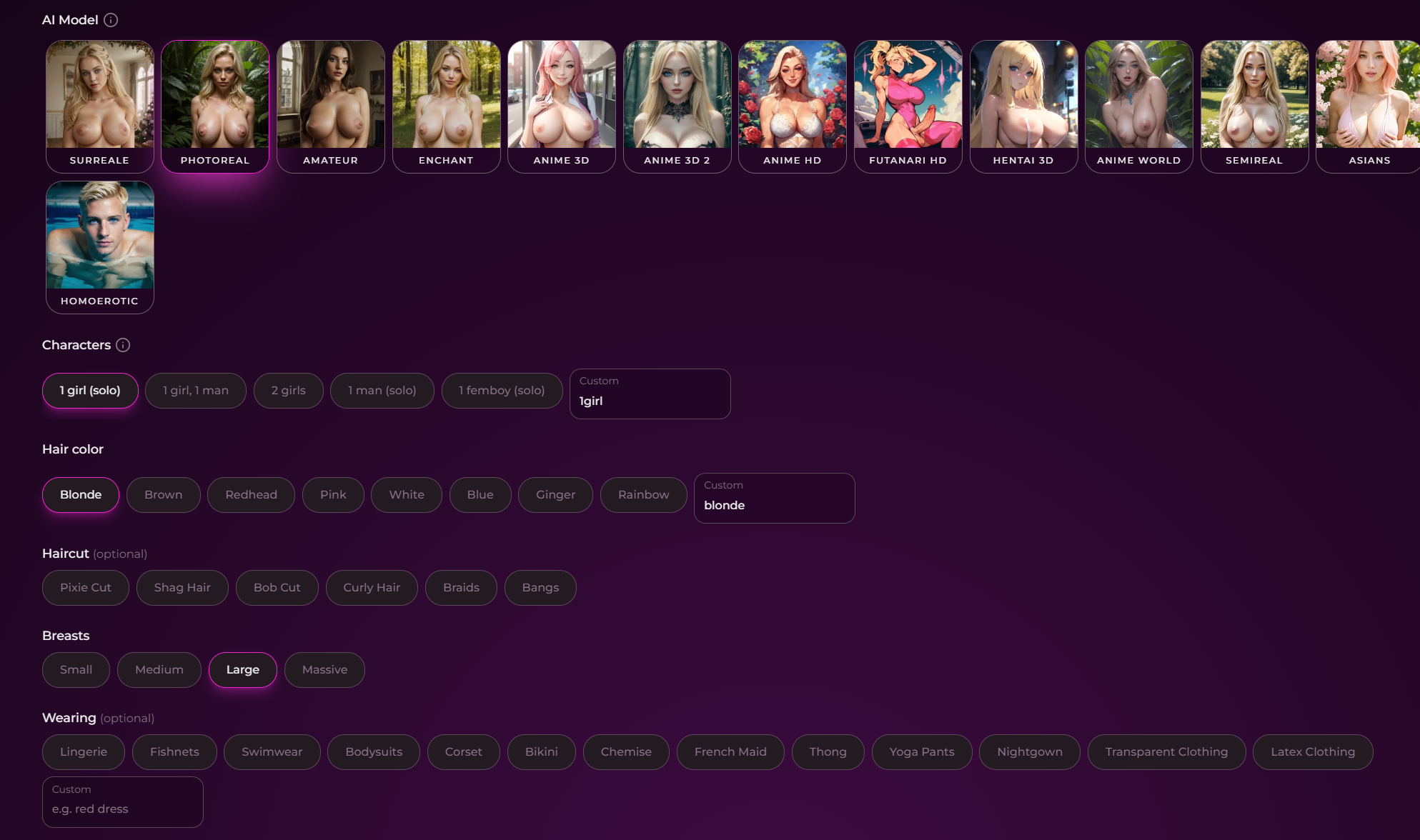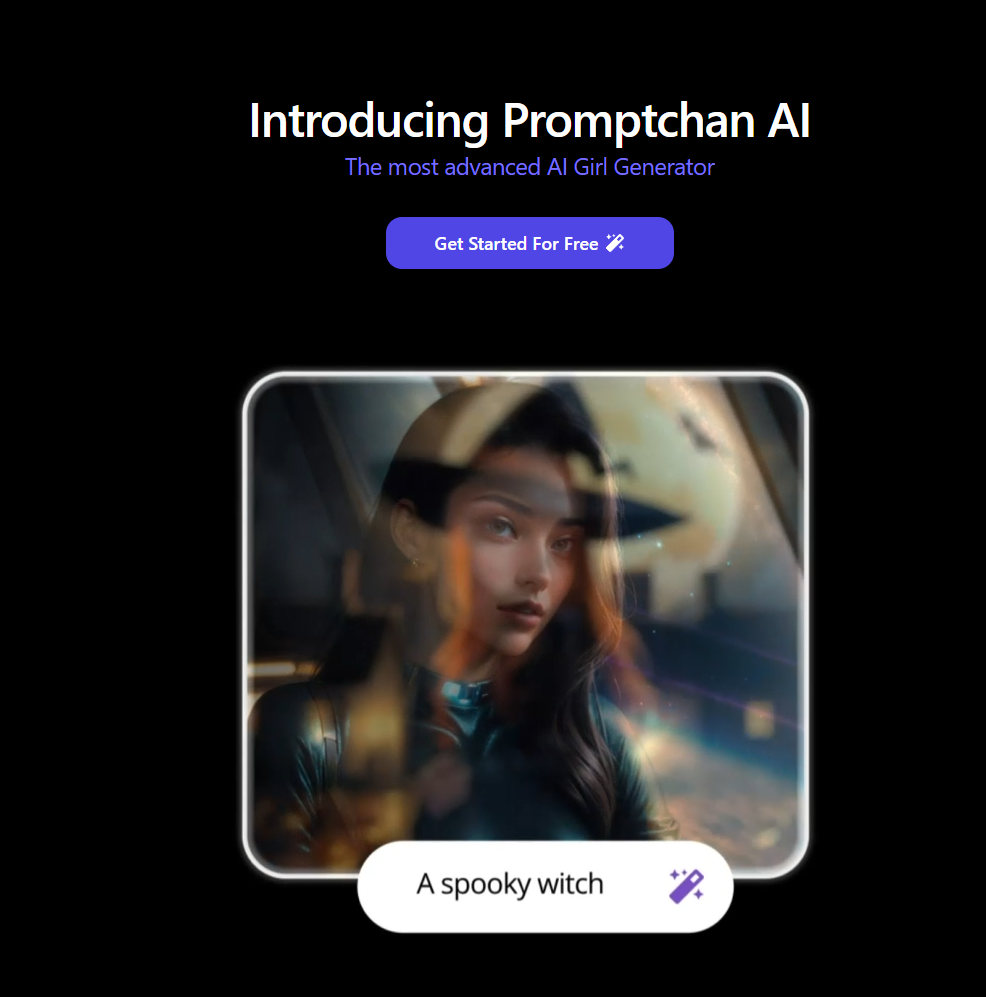Unpacking the Controversial Nature of Ai-Generated Ahegao Faces
If you’ve spent any time on the internet in recent years, chances are you’ve come across the increasingly popular trend of ahegao faces. These exaggerated expressions of pleasure and ecstasy, often seen in anime and hentai, have now found their way into the world of artificial intelligence (AI). However, with this new technology comes a whirlwind of controversy surrounding its use and implications, leaving many to question the morality and impact of this seemingly harmless phenomenon.
Candy.ai: The Pioneer
Candy.ai was one of the first AI-based programs specifically designed for generating Ahegao faces. Developed in 2021 by a team of programmers from Japan, this program quickly gained popularity among cosplayers, models, and content creators on social media platforms like Instagram and TikTok.
At its core, Candy.ai uses deep learning algorithms to analyze facial features such as eye position, mouth shape, and skin tones. By inputting an image or video clip into the program, users can adjust certain settings such as facial expression intensity and background colors to create their desired Ahegao face.
Pros:
- Realistic-looking Ahegao faces with customizable settings
- User-friendly interface for easy manipulation of images and videos
- Can be used on both still images and video clips
Cons:
- The use of deep learning algorithms raises concerns about data privacy and security
- Some users have reported glitches or errors in the program
- Potential for misuse or exploitation of the program by individuals with malicious intent
The Impact on Cosplay and Modeling Communities
One of the main demographics that Candy.ai has attracted is cosplayers and models. These individuals use the program to enhance their photoshoots or create unique content for social media platforms. Some argue that this technology allows them to express themselves creatively, while others criticize it as a form of objectification.
On one hand, some cosplayers see AI-generated Ahegao faces as a way to embody their favorite characters from anime or manga. They argue that it adds an element of fantasy and playfulness to their cosplays and helps them connect with fans who share similar interests.
On the other hand, there are concerns about these AI-generated faces perpetuating unrealistic beauty standards and further sexualizing already objectified female characters from popular media. The pressure to conform to this idealized version of Ahegao can also lead to self-esteem issues among young cosplayers who may feel compelled to alter their appearance using technology.
Similarly, models who utilize Candy.ai argue that it gives them more control over how they present themselves online. They may use these AI-generated Ahegao faces as a marketing strategy or as a tool for attracting followers on social media platforms.
However, critics point out that the practice can reinforce harmful narratives around women’s bodies being solely objects of sexual gratification. It also raises concerns about consent, as many models and cosplayers may not fully understand or be comfortable with the implications of sharing AI-generated Ahegao images of themselves online.
The Ethical Considerations
Aside from the impact on specific communities, there are broader ethical considerations surrounding Candy.ai and other similar programs. The use of deep learning algorithms in creating these faces raises questions about data privacy and security. Users must upload images or videos to the program for it to work, which means their data is being collected and potentially stored by a third party.
There are also concerns about the potential misuse or exploitation of this technology. Or, if you’re interested in exploring the brat fetish aspect of BDSM, it’s important to understand that a brat doesn’t necessarily fit into traditional roles like submissive or dominant. While it may seem harmless to use AI-generated Ahegao faces for personal use, there have been cases where individuals have used them without permission to harass or blackmail others. Before diving into the ethical implications of AI-generated sexual images, it’s important to understand the technology behind artificial intelligence and sex imagery and how it is created.
Moreover, some argue that these programs contribute to the normalization and acceptance of hypersexualized content online, especially among younger audiences who may come across these images without proper context or understanding.

Seduced.ai: The Influencer Favorite
Seduced.ai was introduced in 2022 and quickly gained popularity among influencers on social media platforms like Instagram, Snapchat, and OnlyFans. This program offers more advanced features than Candy.ai, including an option to sync the generated Ahegao face with audio clips or music.
Pros:
- Advanced features such as audio syncing add more creative possibilities
- User-friendly interface for easy manipulation
- Can be used for both still images and video clips
Cons:
- Raises concerns about data privacy and security with its use of deep learning algorithms
- Increased pressure to conform to unrealistic beauty standards due to advanced features
- Potential for misuse or exploitation by individuals with malicious intent
The Impact on Influencer Culture
Influencers, particularly in the adult entertainment industry, have found Seduced.ai to be a useful tool for creating provocative content. The audio syncing feature allows them to add another layer of stimulation and appeal to their audience.
However, similar ethical concerns raised about Candy.ai can also be applied here. Many influencers may not fully understand or consider the implications of using AI-generated Ahegao faces in their content. This can further contribute to harmful narratives around women’s bodies and perpetuate unrealistic beauty standards.
Moreover, some critics argue that this technology commodifies female sexuality and reinforces patriarchal power dynamics by encouraging the sexualization and objectification of women for profit.

PromptChan: The Controversial Newcomer
PromptChan is a more recent addition to the world of AI-generated Ahegao faces. Developed in 2024, it stands out from its predecessors due to its use of user-submitted prompts and phrases to generate Ahegao expressions.
Pros:
- Allows users to participate in the creation process through prompt submissions
- Can be used for both still images and video clips
- Unique concept adds an element of randomness and creativity
Cons:
- User data privacy and security concerns with use of deep learning algorithms
- Risks contributing to normalization of non-consensual content with lack of moderation on prompts
- Potential for offensive or inappropriate prompts submitted by users
The Controversy Surrounding PromptChan
PromptChan has sparked controversy due to its reliance on user-submitted prompts, which are often sexual or explicit in nature. While there are measures in place for moderators to remove offensive content, there is still a risk of inappropriate prompts slipping through the cracks.
This raises concerns about the normalization of non-consensual or offensive content and its impact on younger users who may come across it. It also highlights the ethical responsibility that comes with creating and promoting technology in a society where online sexual harassment and exploitation are prevalent issues.
Conclusion: The Implications of AI-generated Ahegao Faces
The rise of AI-generated Ahegao faces has sparked debates about consent, data privacy, objectification, and commodification of female sexuality. While some see it as harmless fun or an interesting use of technology, others argue that it reinforces harmful narratives and perpetuates unrealistic beauty standards.
As these programs continue to evolve and gain popularity, there is a need for critical discussions around their ethical implications. As consumers, we must also consider our role in supporting or opposing this type of content and how we can promote healthy and respectful attitudes towards women’s bodies online.

Candy.ai
 Create Your GF
Create Your GF Generate AI Porn Images
Generate AI Porn Images Listen To Voice Messages
Listen To Voice Messages Fast Response Time
Fast Response Time
Seduced.ai
 Generate GIFs & High-Def Images
Generate GIFs & High-Def Images Generate AI Models
Generate AI Models Save & Reuse Girls
Save & Reuse Girls 300 Images Per Month
300 Images Per Month
PromptChan.ai
 Generate GIFs & Videos
Generate GIFs & Videos Completely Free To Test
Completely Free To Test Edit Your AI Models
Edit Your AI Models Make Porn Images (no limit)
Make Porn Images (no limit)What is the meaning of ai ahegao and where does it originate from?
Ai ahegao is a term that refers to a facial expression commonly portrayed in anime and manga, typically characterized by a wide open mouth, rolled back eyes, and flushed cheeks. It originated from Japanese hentai (erotic) media and has become popularized in Western culture as well. The term combines the Japanese word ahe meaning strange or weird, with gao which means face.
Can anyone wear ai ahegao clothing or accessories, or is it meant for a specific group of people?
Anyone can wear ai ahegao clothing or accessories, as there is no specific group of people it is intended for. It is a fashion trend that anyone can embrace and enjoy.
Are there any controversies surrounding the use of ai ahegao in popular culture?
There have been debates surrounding the use of ai ahegao, a popular facial expression in anime and manga, due to its sexual nature and potential harm towards women. Some argue that it objectifies and perpetuates harmful stereotypes, while others believe it is simply a harmless form of expression.

